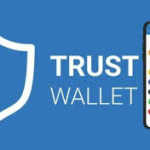A Comprehensive Guide to Cryptocurrency Wallets: Types, Security, and Best Practices
## Introduction
Cryptocurrency wallets are essential tools for anyone looking to engage in the world of digital currencies. They serve as the interface between the user and the blockchain, allowing for the storage, transfer, and management of cryptocurrency assets. Understanding the various types of wallets, their security features, and best practices for using them is crucial for both novice and experienced investors in the cryptocurrency space. This article provides a thorough analysis of cryptocurrency wallets, alongside knowledge insights and considerations that users should keep in mind.
## What is a Cryptocurrency Wallet?
A cryptocurrency wallet is not a physical wallet like those used for cash; rather, it is a software program or hardware device that stores public and private keys, enabling users to send and receive cryptocurrencies. The wallet itself does not store the coins but allows users to interact with the blockchain where these digital currencies exist. When a user wants to send or receive cryptocurrency, the wallet generates a digital signature using the private key, which is then used to execute the transaction on the blockchain.
### Key Components of a Cryptocurrency Wallet
1. **Public Key**: This is a cryptographic code that serves as an address for receiving cryptocurrency. It is akin to an email address; you can share it with others to receive funds.
2. **Private Key**: This is a secret number known only to the owner of the wallet. It is crucial for accessing and managing the cryptocurrency held in the wallet. If someone gains access to your private key, they can steal your cryptocurrency.
3. **Wallet Address**: This is derived from the public key and is the string of characters shared with others to receive cryptocurrency.
## Types of Cryptocurrency Wallets
Cryptocurrency wallets can be classified into several categories based on their functionality and security features.
### 1. Hot Wallets
Hot wallets are connected to the internet and facilitate quick and easy access to cryptocurrency. They are generally more user-friendly and suitable for day-to-day transactions. However, their online nature makes them susceptible to hacking.
**Types of Hot Wallets**:
– **Web Wallets**: These are hosted on the cloud and accessed through a browser. They are convenient but require users to trust third-party services.
– **Mobile Wallets**: These applications are installed on smartphones, allowing easy access and transactions on the go. They often incorporate features such as QR code scanning.
– **Desktop Wallets**: Software installed on a personal computer which provides users with full control of their private keys. Although they offer more security than web wallets, they are vulnerable to malware and hacking.
### 2. Cold Wallets
Cold wallets are not connected to the internet, therefore providing a higher level of security for the storage of cryptocurrencies. Although they are less convenient for regular transactions, they are preferred for long-term storage.
**Types of Cold Wallets**:
– **Hardware Wallets**: Physical devices that securely store private keys offline. They are immune to online attacks but can be lost or damaged. Popular examples include Ledger and Trezor.
– **Paper Wallets**: This involves printing out the public and private keys on paper. While they are immune to online threats, they can be easily lost or damaged. Users must take great care to secure the paper.
## Wallet Security Features
Security is paramount when it comes to cryptocurrency wallets. Implementing strong security features helps mitigate risks associated with hacking and theft. Here are some common security features:
### 1. Two-Factor Authentication (2FA)
This security measure requires users to provide two forms of identification before accessing their wallet. This added layer of security can significantly reduce the risk of unauthorized access.
### 2. Multi-Signature (Multisig) Wallets

A multisig wallet requires multiple private keys to authorize a transaction. This means that even if one key is compromised, the funds remain secure.
### 3. Backup and Recovery Options
Strong wallets provide options for backing up keys and recovering funds in case of loss or theft. Users should create backups and securely store recovery phrases.
### 4. Encryption
Many wallets use strong encryption methods to protect private keys, ensuring that even if an unauthorized person gains access to the wallet, they cannot easily retrieve the keys.
## Best Practices for Using Cryptocurrency Wallets
To ensure the safety of your digital assets, follow these best practices:
### 1. Choose the Right Wallet Type
Select a wallet based on your specific needs—hot wallets for daily transactions or cold wallets for long-term storage. Consider balancing convenience with security.
### 2. Keep Software Updated
Always update your wallet software to the latest version to protect against known vulnerabilities and ensure you have the latest security features.
### 3. Use Strong Passwords and 2FA
Employ strong, unique passwords for your wallets, and enable two-factor authentication wherever possible.
### 4. Be Wary of Phishing Attempts
Be vigilant against phishing schemes that aim to trick users into providing sensitive information. Always verify the authenticity of requests and links.
### 5. Keep Backup and Recovery Information Safe
Create and store backups of your wallet in different secure locations. This should include backup phrases and files needed for recovery.
## Understanding Wallet Compatibility
Another essential aspect of cryptocurrency wallets is their compatibility with different cryptocurrencies and blockchain networks. Not all wallets support every cryptocurrency. When selecting a wallet, ensure that it can manage the specific tokens you wish to store.
### 1. User-Friendly Interfaces
It is vital to choose a wallet with an intuitive interface. User-friendly wallets make it easier to manage assets and perform transactions efficiently.
### 2. Integration with Exchanges
Some wallets offer integration with cryptocurrency exchanges, allowing users to buy, sell, and trade cryptocurrency directly from the wallet interface. This can enhance convenience but also adds some risk as these wallets are often online.
## Common Mistakes to Avoid
Even experienced users can make mistakes when managing cryptocurrency wallets. Here are a few common pitfalls:
### 1. Misplacing Private Keys
There have been numerous cases where users lost access to their cryptocurrency due to misplaced or forgotten private keys. Store them securely and use recovery options.
### 2. Relying Solely on Hot Wallets for Storage
Using only hot wallets can expose users to risks associated with being online. It’s crucial to diversify by using cold wallets for significant holdings.
### 3. Ignoring Security Features
Many users neglect to enable all available security features. Always use two-factor authentication and stay informed about wallet security best practices.
## Regulatory Considerations and their Impact
The regulatory landscape surrounding cryptocurrency is continually evolving and varies significantly from region to region. Regulations can affect wallet operations and user rights, and compliance with local laws is essential for wallet providers. Some key considerations include:
### 1. KYC and AML Regulations
Know Your Customer (KYC) and Anti-Money Laundering (AML) regulations impact many wallets, especially those connected to exchanges. Users may be required to provide identification.
### 2. Tax Implications
Cryptocurrency transactions may have tax consequences, depending on local laws. Keeping proper records of transactions conducted via wallets is vital for tax reporting purposes.
## The Future of Cryptocurrency Wallets
As the cryptocurrency landscape evolves, so will the tools and technologies associated with it. Future trends may include:
### 1. Enhanced Security Features
As threats evolve, wallets will continue to integrate advanced security measures such as biometric authentication and improved encryption.
### 2. Decentralized Wallets
The rise of decentralized finance (DeFi) is leading to the development of decentralized wallets, which provide users with increased control and privacy.
### 3. Multi-Asset wallets
Developers are working towards wallets that can manage not only popular cryptocurrencies but also a variety of blockchain-based assets, including NFTs and tokens.
## Conclusion
Cryptocurrency wallets play a vital role in the digital currency ecosystem by providing users with a secure means to store and manage their assets. As the technology and market surrounding cryptocurrencies continue to evolve, staying informed about wallet types, security features, and best practices becomes essential for anyone engaging in cryptocurrency transactions. By understanding these key aspects, users can safeguard their investments and participate confidently in the digital economy.

